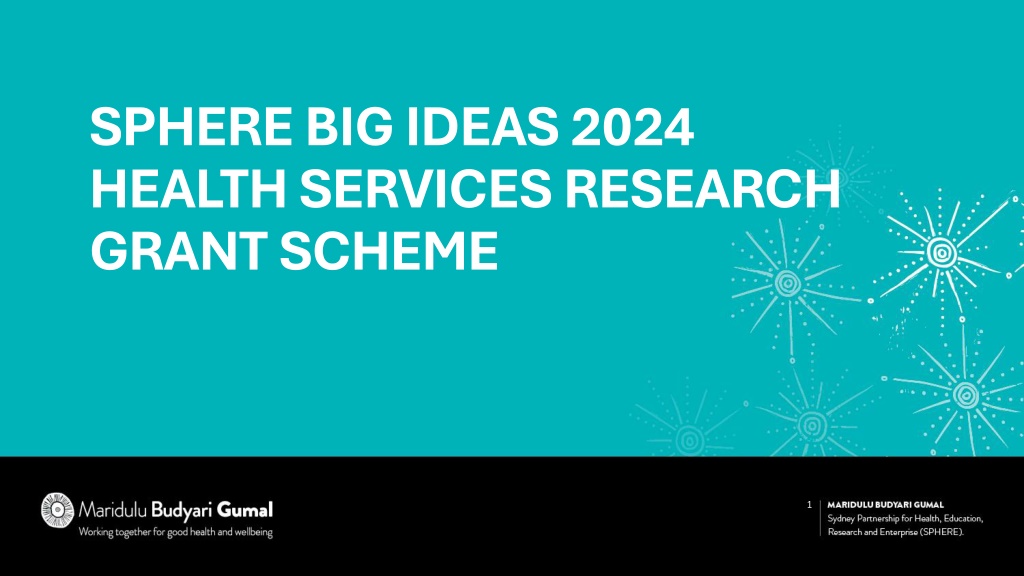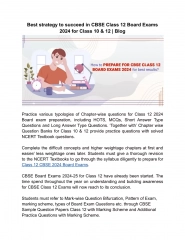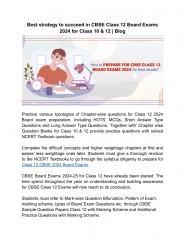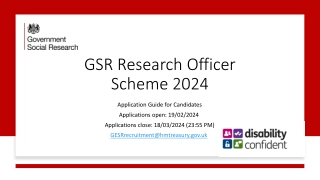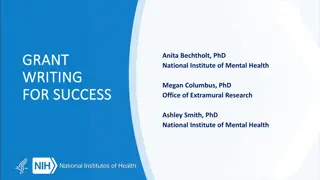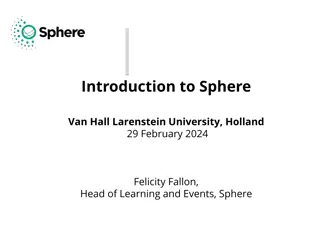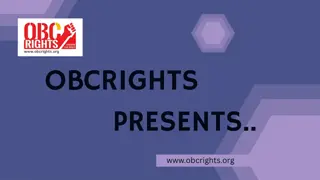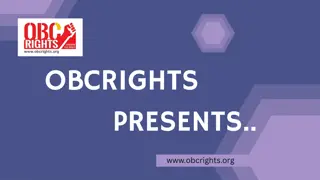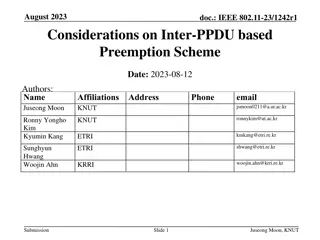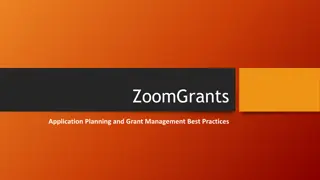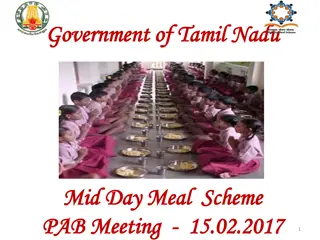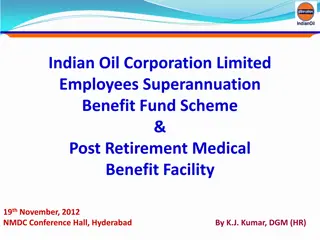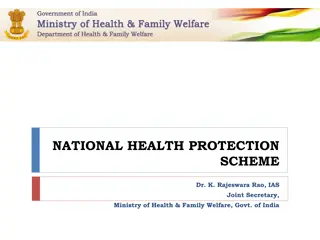SPHERE 2024 Health Services Research Grant Scheme
Building on successful Big Ideas model, SPHERE announces 2024 Health Services Research Grant supporting impactful healthcare proposals aligning with priority areas for tangible health improvements. Grant details, eligibility, funding, support, and timeline included.
Download Presentation

Please find below an Image/Link to download the presentation.
The content on the website is provided AS IS for your information and personal use only. It may not be sold, licensed, or shared on other websites without obtaining consent from the author.If you encounter any issues during the download, it is possible that the publisher has removed the file from their server.
You are allowed to download the files provided on this website for personal or commercial use, subject to the condition that they are used lawfully. All files are the property of their respective owners.
The content on the website is provided AS IS for your information and personal use only. It may not be sold, licensed, or shared on other websites without obtaining consent from the author.
E N D
Presentation Transcript
SPHERE BIG IDEAS 2024 HEALTH SERVICES RESEARCH GRANT SCHEME 1
INTRODUCTION AND OBJECTIVE Building on our successful Big Ideas model, SPHERE announces the 2024 Health Services Research Grant. This grant aims to support Big Ideas that promise significant impact on healthcare and practice. Successful proposals should align with SPHERE priority areas and outline methods for translating research into tangible health improvements. 2
PRIORITY AREAS 1.Transition of Care 1. Paediatric to adult services 2. Justice health to primary care 3. Mental health care for war veterans 4. Care for priority populations (CALD, homeless, LGBTQI+) 2.Sustainable Prevention Systems 1. Diverse communities and environments 3.Models of Home-based or Virtual Care 4.Novel Models of Primary Care 1. Aged care interface 2. Audiology and allied health 3. Ageing primary care workforce 4. Nurse practitioners in primary care 5. Dental care and its relationship with primary care 3
ELIGIBILITY AND COLLABORATION Eligibility: Demonstrates a Big Idea addressing a knowledge gap or wicked problem . Aligns with priority areas. Collaboration* across at least 3 SPHERE Platforms and Clinical Themes. Active consumer, community, and research end-user involvement. CIA must be a SPHERE member. Involves early and mid-career researchers. Funding contingent on demonstrating pathways to additional funding. *Collaboration: Multidisciplinary collaboration within SPHERE and external organisations. Engagement with consumer and community representatives as co-investigators. 4
FUNDING DETAILS Total funding available: $500,000 Supports 3-5 grants, each between $100,000-$200,000 Project grant is for 12 months Funding contingent on demonstrating pathways to additional funding Grants are non-renewable and must be completed within the funding period 5
SUPPORT AND TIMELINE Support: SPHERE facilitates networking and guidance for forming partnerships. Assistance in connecting with research teams, health service providers, and consumer representatives. Timeline: Call for Applications: 26th July 2024 Project Plan Submission: 14th September 2024 Close of Applications: 11th October 2024 Review Panel Scores: By 15th November 2024 Funding Notification: By 30th November 2024 Project Commencement: Q1 2025 Progress Reports: Q3 2025 Final Report: Q2 2026 6
APPLICATION EVALUATION Project Significance and Impact Addresses critical health system needs valuable to community, healthcare providers, and system managers Demonstrates potential for national and international competitiveness Clear plan for translating research outcomes into improved health outcomes Enhances healthcare system effectiveness Justification as a "Big Idea" with significant potential impact Project Plan Well-defined, logical, and strongly developed objectives Research design effectively addresses stated aims Demonstrates high feasibility with mitigated risks Considers available resources (workforce/COVID) and timeframes (HREC) Innovative approach to addressing health system needs Clear project monitoring strategies and governance arrangements 7
APPLICATION EVALUATION Collaboration, Strength and Record of Achievement Demonstrates how seed funding will accelerate a Big Idea in the research development pipeline and identifies pathways to larger-scale research translation and collaboration schemes. Presents a clear strategy for sustainable future funding, with potential to leverage additional funding and new investment opportunities. Identifies risks (e.g., COVID, workforce, ethics delays) and outlines mitigation strategies. Plans for continued collaboration beyond project completion to enhance research and translation capabilities. The project leadership team has a strong track record and includes early and mid-career researchers (EMCR), with involvement from at least three Clinical Themes and/or Platforms. Support requests to platforms and themes that you are collaborating with must be submitted to the Theme or Platform lead at least four weeks prior to the grant submission deadline of Friday, 11th October 2024. Emphasises consumer and community involvement. Multi-disciplinary team includes biostatisticians, health economists, and implementation scientists, further engaging with groups or organisations beyond SPHERE. 8
KEY COMPONENTS OF PROPOSAL Project Overview: Title: [Project Title] Priority Area: [Selected Priority Area] Collaboration [Process and across SPHERE] Big Idea: [Describe the Big Idea and its significance] Risk and feasibility Translation of research outcomes 9
BUDGET JUSTIFICATION 1.Personnel: 1. Justification by Salary Level and FTE/Hours: Project Manager: Responsible for overseeing the project, coordinating tasks, and ensuring milestones are met. Salary is justified based on X hours per week at a Y rate. Research Assistants: Assist with data collection, analysis, and other research activities. Justified by Z hours per week at a W rate. Clinical Staff 2.Equipment: 1. Necessary for Project Completion: Medical Equipment Laboratory Equipment: For testing and analysis and other essential lab tools. IT Equipment: Software, and other technology required for data management and analysis (statistical analysis). 3.Consumables: 1. Required Materials: Office Supplies: Stationery, printing materials, and other consumables needed for administrative tasks. 10
BUDGET JUSTIFICATION Detailed Explanation for Each Line Item: Each budget item is calculated based on the specific needs of the project and aligned with the goals and objectives outlined in the proposal. Personnel costs are based on standard salary levels and the estimated number of hours required for each role. This ensures that we have the necessary human resources to carry out the project efficiently. Equipment costs are justified by the essential role of these items in the successful completion of the project. Without these tools, you would not be able to perform the necessary procedures or analyses. Consumables are calculated based on the expected usage rates during the project timeline. In-Kind Contributions: Include the use of existing facilities, volunteer time from clinical staff, and donated supplies from partner organisations. These contributions significantly reduce the overall cost of the project and demonstrate strong support from the community and stakeholders. Leveraged Investment: Highlight any additional funding or resources obtained from other sources, such as grants from other organisations, donations, or institutional support. This demonstrates and provides justification for the project's potential for sustainability and the broader interest in its success. 11
CONTACT DETAILS AND TEAM Contact Details: Chief Investigator A: [Full Name, Institutional Affiliation, Email] Project Team: [List of Chief and Associate Investigators] 12
FOR QUESTIONS ABOUT THE GRANT CONTACT Dr Brigitte Gerstl: b.gerstl@unsw.edu.au 13
